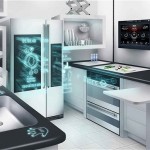 It’s increasingly common for mobile devices to use the sensors built into them to derive fascinating insights about our health. For instance, a Stanford based team used data from smart watches to predict the onset of a range of conditions.
It’s increasingly common for mobile devices to use the sensors built into them to derive fascinating insights about our health. For instance, a Stanford based team used data from smart watches to predict the onset of a range of conditions.
They tracked 60 people equipped with smart watches and other biosensor devices as they went about their daily lives. It reveals that it is increasingly possible to flag when people have regular illnesses such as colds, but even early signs of more complex conditions, such as diabetes.
Fitness sonar
Of course, it isn’t just smartphones and watches that have such capabilities, with researchers also highlighting the potential of devices such as the Amazon Echo. I’ve written previously about voice recognition technology and its capability of diagnosing a range of conditions, from Alzheimer’s to PTSD, but researchers are also taken an even more innovative approach to disease detection.
Researchers from Elliptic Labs are using ultrasound technology to detect ones presence. It uses the speakers to emit a high-frequency audio wave that is picked up by a microphone after it bounces back off of your body. This signal is then analyzed by the Elliptic Labs software.
The company suggest it could be deployed in places like elderly care homes to notify their caregiver if movement is not detected for an extended period of time. The aim is to partner with companies such as Amazon to build the functionality into the devices.
Smart homes
Of course, such technology isn’t the only attempt to make homes healthier. I’ve written previously about advances in smart technology for the home, and particularly its impact on elderly patients.
Smart Homes, developed by UT Arlington, come complete with a number of interesting technologies:
- Sensors underneath tiles on the floor that will allow researchers to measure and evaluate changes in walking gaits and weight that might suggest illness or injury;
- A special camera embedded in a bathroom mirror that will tell researchers about day-to-day heart rate, facial expression, and skin color. Changes in expression and skin color can reveal aspects of the overall health status as well as about oxygen content of the blood;
- Lift chair to help residents stand;
- Smart appliances such as an LG microwave, range and refrigerator;
- Connected exercise equipment, including a recumbent bike and interactive Kinect-based Tai Chi trainer;
- Other systems that will detect whether medication is being properly managed or if the resident is not sleeping well or staying in bed too long.
An interesting aspect of this development is the predictive analytics deployed on the huge data generated from the home (and its inhabitants).
A good example of this in action comes from a Canadian company called ThinkEco Power. They track the data generated by any IoT connected appliances and build up a normative baseline of activity.
So they can gage how you’re using your appliances, your mobile phone and so on. When behavior flits outside of that norm, it can trigger a warning sign.
The technology features a sensor that’s attached to the house, with each sensor having a wi-fi range of 100m. It reads the data generated, and an algorithm then determines whether the appliances are on or off.
If it detects unusual behavior, it sends a notification to a relative or neighbor via text message. Indeed, if the situation is grave enough, it will even notify emergency services.
These kind of technologies are going to be crucial if we’re to create a kind of environment whereby elderly people can maintain their independence whilst loved ones are confident that they are safe and sound.